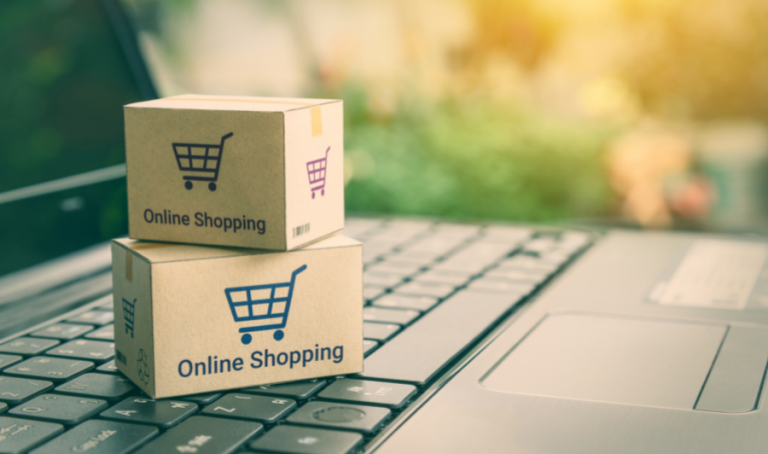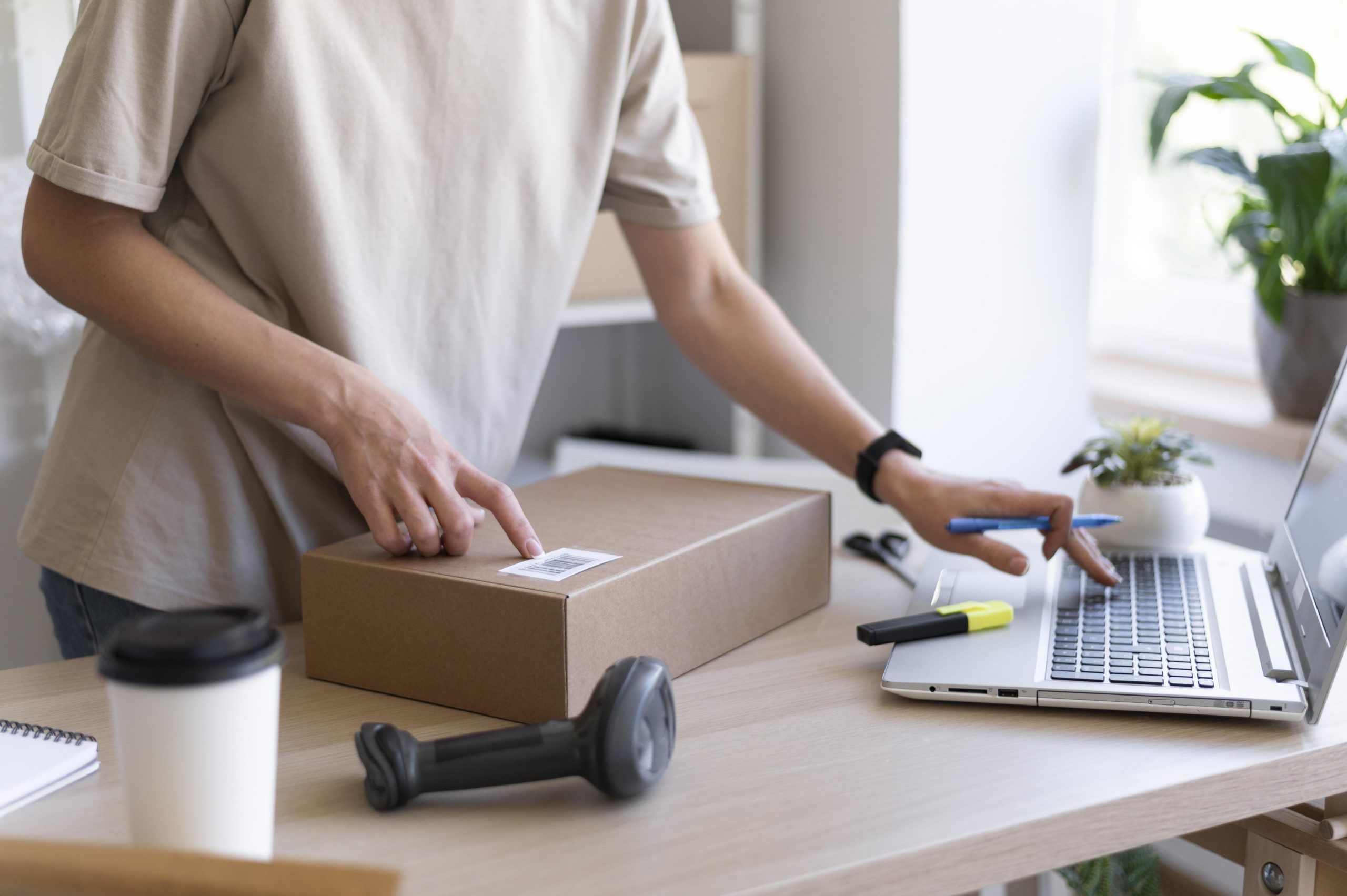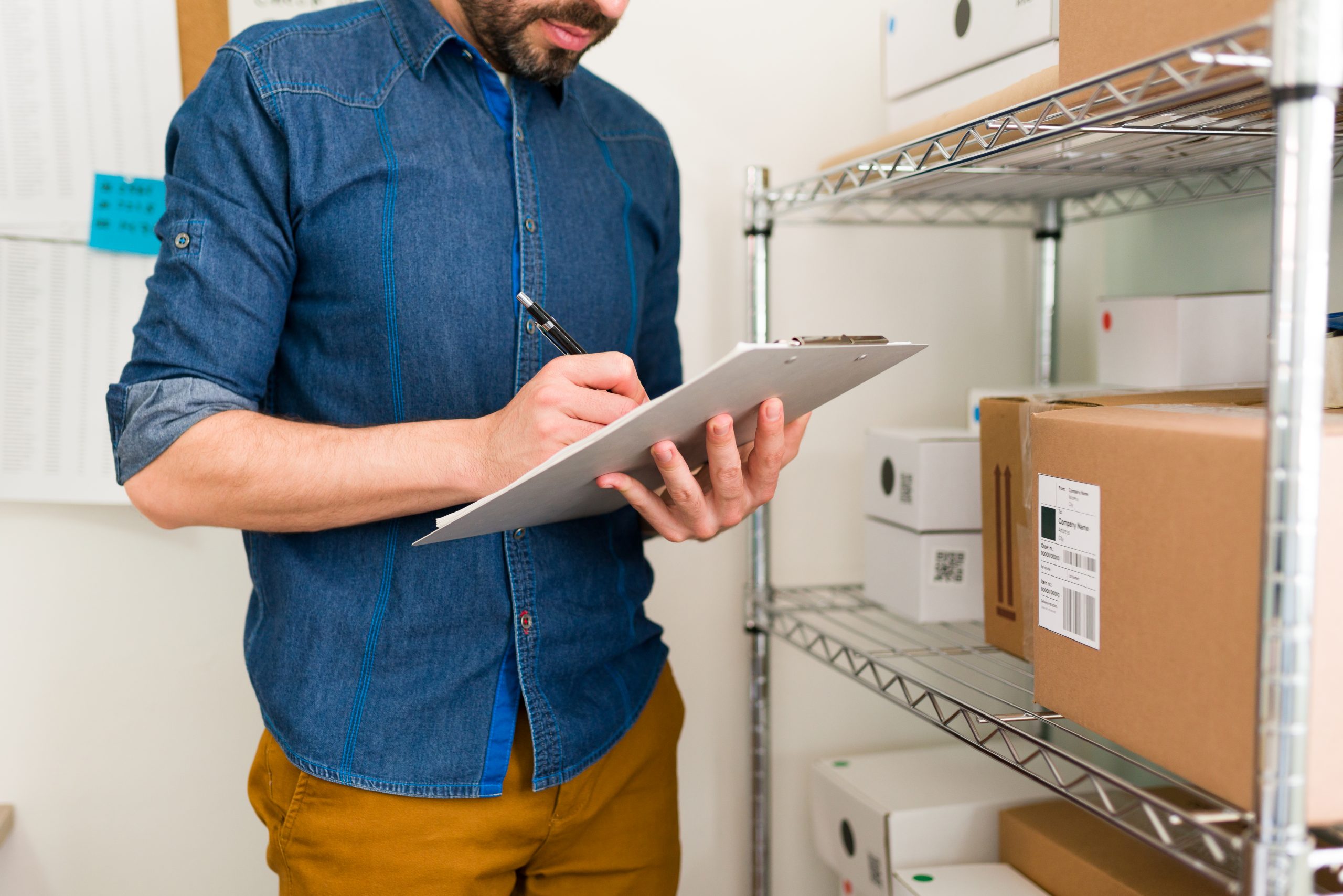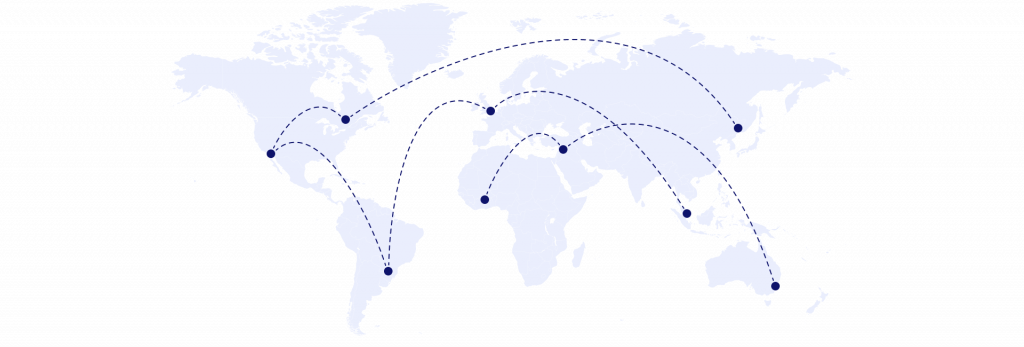eCommerce trends and statistics in 2022
We’ve all heard that ecommerce is booming, especially after the coronavirus pandemic but exactly what is happening?

Staying ahead of trends in the ever-changing eCommerce space is a must if you want to remain competitive. Whether it’s consumer behaviour, new technology or industry movements, we’ve broken down the most impactful changes to keep abreast of. We’ll cover the following:
- What are the consumer trends?
- How is AI & tech involved?
- What are the digital trends?
- What are the industry insights?
Consumer Trends
It hardly needs pointing out that consumer trends are evolving each year, most notably post-pandemic. Australian shopping behaviour reports show that on average, 5.4 million households participate in online shopping each month1, a 39% increase since 2019. A survey conducted by Auspost, meanwhile, suggests that 93% of respondents said that they’d increase or maintain their current levels of online shopping.
So, with such high demand and growth in retailers across major industries, how are consumers selecting who they purchase from? Over half of shoppers (52%) indicate that they are more likely to purchase from companies that share their values2 and a 2022 survey showed that on average, nine in ten Australians are much more likely to purchase sustainable and ethically produced products and services3.
While growing challenges in online shopping increase the difficulty of entry, statistics show there are some proven methods to increase eCommerce conversions. Delivery times, for example, are one of the most important factors when consumers purchase from any eCommerce store, with 67% of consumers expecting an improvement in delivery speed. This makes it crucial for eCommerce merchants to select carriers that are not only reliable but also have a track record of fast deliveries with the least disruptions1. Shopify’s research also indicates that websites with a personalised customer experience using internal customer data are proven to lift revenue by 20% and reduce cart abandonment2.
AI & Other Tech
When it comes to technology, how has innovation contributed to the growth of the eCommerce industry? With the growing presence of AI and other forms of technology within our day-to-day lives, how are these technologies transforming online shopping?
Within our research, we’ve found that in the APAC region alone, 63% of consumers most commonly shop within a mobile app such as Amazon, eBay, ASOS3. With the majority of consumers now shopping on mobile devices, this has also created the necessity to ensure mobile applications perform at high speeds to prevent increases in bounce rates.
Social media
Auspost research conducted in 2022 found that 97% of Gen Z consumers say social media is their main source of inspiration on which products to procure and 62% of people aged 16 to 39 will buy products directly from their social feeds, on platforms such as Facebook, Instagram, TikTok and Snapchat4. Instagram shop revenues alone saw a 123% growth year on year from FY20 to FY21, with Instagram becoming the primary focus of marketing for many eCommerce stores4. According to recent social media statistics, 90.4% of global internet users are visiting an online retail site or store; 81.5% are searching online for products or services; and 76.8% are purchasing a product online1.
VR & voice search
With many companies now heavily investing in VR and voice search capabilities for their platforms, we’ve seen adoption of such technologies in day-to-day shopping trends. With almost one-third of Australian houses adopting voice search in their homes, eCommerce platforms are adapting their technology to complement voice search3. 71% of consumers also said that they’d be much more inclined to shop more often with eCommerce brands that use virtual reality (VR)5.
Industry Insights
With the growth of eCommerce, what do businesses from the industry report from their internal findings in 2022? Auspost reports that they’ve committed an additional $400 million in 2022 to develop new facilities, technologies and a larger workforce to accommodate the growth in online sales, a total investment of $1 billion over the past three years since the beginning of the Covid-19 pandemic4.
With eCommerce retail predicted to account for 20.4% of global retail by end of 2022, industries such as homeware and appliances saw the highest expenditure at 23.8%, followed by 16.3% in department stores, 15.3% at grocery and liquor online retailers, 12.4% for personal and recreational and 10.9% for fashion6. One in three medium-sized businesses estimates that over 25% of their capital expenses will go towards investing in eCommerce throughout 2022. These investments include technology, marketing, larger workforces and customer service4.
Reports by Roy Morgan found that a whopping 75% (approximately 16 million) of Australians aged 14+ are now aware of buy now pay later (BNPL) services7. ABC reported that there are now 5.9 million active accounts across various BNPL service providers and a survey of 1,746 Australians RFI Global for the Australian Finance Industry Association found that 38% of those surveyed had used one of the buy now pay later services. With Australians spending over $12 billion via buy now pay later services in FY20 – FY21, these services accounted for 1% of transactions online8. Statistics show that online retailers implementing buy now pay later are benefiting immensely especially with young adult consumers.
- Open 15+ local currency accounts and get paid like a local
- Pay suppliers, partners and staff worldwide in 100+ currencies
- Collect payments for free from 130+ marketplaces and payment gateways, including Amazon, Etsy, PayPal and Shopify
- Take control of spending with the World Card, a business expense card that saves you more with 1% cashback. Learn more
- Save with competitive exchange rates on currency conversions and transfers
- Lock in exchange rates for up to 24 months for cash flow certainty
Statistics summary
Consumer Trends
- In 2022 52% of shoppers are more likely to purchase from a company with shared values.2
- Personalization programs have proven to lift revenue by up to 20%, reduce cart abandonment, and increase customer satisfaction.2
- A recent survey revealed that 76% of online shoppers have made purchases on a site outside their own countries.6
- 9 in 10 Australian consumers are more likely to purchase ethical and sustainable products.3
- 79% of consumers say their experience in interacting with a brand is just as important as the products the brand offers.10
- 65% of consumers want to buy products from brands that demonstrate a genuine commitment to sustainable business practices.5
- More online purchases are made during the day compared to 2019, with an 11% drop in mid-evening (7pm to 10pm) purchases and an 11% rise in afternoon (2pm to 5pm) purchases.4
- Australia sits just above the global average for consumers who have bought physical goods online at least once in the past three months and made at least one cross-border purchase in the past year. 84% of respondents in Australia shop online at least once a month – four points above the rest.4
- 67% of consumers expect an increase in online delivery speed over the next 12 months.1
- 88% of businesses today have some form of sustainable practices and products. Of these, 34% have experienced improvements in customer loyalty and company culture as a result.4
- 93% of respondents in a recent survey said they’ll maintain or increase their online shopping activity in 2022.4
- 5.4 million households participate in online shopping each month.1
AI & Other Tech
- Voice search has become increasingly popular in Australian homes, with almost one-third of households now having a ‘smart home’. By 2030, Asia Pacific is expected to account for 25% of the $400 billion Smart Home industry.3
- In the APAC region alone, 63% of customers say they most commonly shop within a mobile app.3
- 97% of Gen Z consumers say social media is their main source of inspiration, and 62% of 16- to 39-year-olds will buy direct from their social feeds.10
- 71% of consumers say they’d be inclined to shop more often with eCommerce brands that use virtual reality.5
- The number of voice shoppers is expected to increase by 55%, reaching a value of $40 billion by 2022.5
- Instagram shopping grow 123% year-on-year from FY20 to 21.4
- 90.4% of global internet users are visiting an online retail site or store. 81.5% are searching online for products or services and 76.8% are purchasing a product online.1
- A survey of 15,000 consumers worldwide found that 76% want to use augmented reality (AR) as a “tool” in their everyday lives.6
- According to Google’s 2019 AR Survey, 66% of people are interested in using AR for help when making purchasing decisions.12
- Adding video lifts conversion rates 60% over buyers interacting with images alone. Merchants who add 3D content to their stores see a 94% conversion lift, on average.12
- According to a study conducted by UPS, 27% of consumers returned goods because they were “not as described.” By allowing customers to virtually “try before they buy,” you’ll give customers more information to decide on and, in turn, reduce return rates.13
- According to 2020 research by Vertebrae – which specializes in AR and 3D eCommerce – conversion rates increase by 90% for customers engaging with AR versus those that don’t.14
- Bailey Nelson has seen a massive 600% lift in conversion rates since bridging its omnichannel experience.15
- Brands such as L’Oréal – which acquired AR try-on technology ModiFace in 2018 – report that their conversion rates are multiplied by three when ModiFace is available.16
- At the beginning of 2022, there was a reported number of 131 virtual reality startups in Australia.17
Digital Trends
- During the COVID-19 pandemic, Australian social media shopping rose by 700%.3
- Australia’s eCommerce market is expected to grow by 13.4% this year whilst the number of Asian Pacific consumers shopping online is up from 33% last year to 45% this year.3
- More than 80% of Australian households purchased something online, driving national year-on-year growth to 12.3%.4
- During the non-lockdown months in 2021, online purchase volume grew 6.4% YOY. This is lower than the previous two years (52.2% YOY in 2020 and 17.8% YOY in 2019), and is indicative of the slower growth anticipated throughout 2022 if the COVID-19 situation remains stable.4
- Of the 1.7 million new shoppers in 2020, 1.4 million households continued to purchase online in 2021. Around two in every three purchases (62%) were made by Very Active Shoppers and Super Shoppers.4
- The proportion of click & collect services in online shopping has grown to 13.6%.4
Industry Insights
- eCommerce will account for 20.4% of global retail sales by the end of 2022, up from only 10% five years ago.6
- Auspost has committed an additional $400 million by mid-2022 in new parcel facilities, fleet, and technology, bringing their total committed investment to more than $1 billion over three years.4
- 27% of shoppers from 40 countries say they will buy more from domestic retailers in the future, while 31% of Australian shoppers plan to buy more local products.4
- Online goods spending continues to outpace overall retail spending, growing 23.4% YOY (compared to 4.3% YOY growth overall).4
- 88% of businesses with an eCommerce presence intend to improve their eCommerce capabilities over the next three months. One-in-three medium businesses estimate that over 25% of their capital expenses will go towards investing in eCommerce.4
- Almost 30% of Australian e-commerce businesses have reported a significant change in their revenue thanks to online sales.1
- Gen Y is also spending big at $308, while baby boomers are disbursing the least amount ($54). People in New South Wales are splurging more than any other state, with a weekly average spend of $257. On the other hand, West Australians are holding back the most, spending only $164.1
- Homeware and appliances saw the highest expenditure at 23.8%. This was followed by online spending with department stores (16.3%), grocery and liquor (15.3%), personal and recreational (12.4%), and fashion (10.9%).1
- Variety stores saw the most significant shift in online sales last year at 74.1%. This was closely followed by food and liquor (69.5%) and home and garden (61.2%).1
- Fashion online retail experienced year-over-year growth of 43.8%, while hobby and recreational goods reported 41.5%. Health and beauty (34.1%) and media (30.1%) had the lowest year-over-year increase.1
- In terms of online marketplaces, eBay had the most monthly visits by far, recording 61.7%. Amazon documented 28.5% visits, while Trade Me (17.7%), Catch.com.au (7.2%), and My Deal (3.5%) fell behind.1
- Gen Z was the top shoppers intending to buy online for the Black Friday and Cyber Monday sales at 62%. Gen Y followed at 48%, while Gen X (27%) and baby boomers (9%) were significantly lower.1
- 58% of consumers made more purchases last Christmas online compared to the year before. The average spending across all age groups was $726.1
- Throughout lockdowns, click and collect was the most effective customer distribution channel for retailers. Only 13% relied on delivery partners, while 22% did not change their methods.1
- By income status, 52% use their eBay business as a side hustle while 29% planned to make it their primary job. 11% agreed it become their primary source of income.1
- 75% of consumers use bank cards and e-wallets to make their online purchases. 16% use bank transfers while only 5% are using cash.1
- Over the past 12 months, PayPal has been crowned the top payment service at 87%. Followed by BPAY (61%), AfterPay (37%), and GooglePlay coming in fourth at 21%. Payment Express (4%) and Stripe (3%) are the least popular services.1
- 61% of consumers have used PayPal and Amazon Pay for their online purchases in the last 12 months. This figure is followed by debit cards (53%), direct debit (50%), and credit cards (43%). 15% pay by invoice, while only 12% are using cash on delivery.1
- 59% use online discounts or promo codes directly from the retailer. 32% rely on physical coupons from coupon books or shopping receipts, while 23% use Cashrewards to save.1
- Buy now, pay later platforms reported 5.9 million active accounts.7
- 38% of 1,746 people surveyed have used a buy now, pay later (BNPL) service.7
- The Australian Finance Industry Association reports that 18% of BNPL users have missed a repayment, compared to 17% of credit card holders.7
- 16 million Australians aged 14+ (75.5%) are now aware of buy-now-pay-later services such as Afterpay, Zip, Latitude Pay, Humm, and Openpay.8
- Based on Mozo’s latest data, 65% of Australians use BNPL to purchase household necessities. These are big-ticket items like fridges, heaters, new beds, appliances, and other functional household items.9
References:
[1] https://www.savvy.com.au/australias-online-shopping-behaviour-report-2022/
[2] https://www.shopify.com.au/partners/blog/ecommerce-trends-2022
[3] https://www.netsuite.com.au/portal/au/resource/articles/ecommerce/ecommerce-trends.shtml
[4] https://auspost.com.au/content/dam/auspost_corp/media/documents/ecommerce-industry-report-2022.pdf
[5] https://rewind.com/blog/ecommerce-trends/
[6] https://www.forbes.com/sites/forbestechcouncil/2022/03/14/e-commerce-trends-2022-what-the-future-holds/?sh=db3fb0d58daf
[7] https://www.abc.net.au/news/2022-06-29/australians-double-spending-through-buy-now-pay-later-services/101191090
[8] https://www.roymorgan.com/findings/8769-digital-payment-solutions-august-2021-202108100636
[9] https://mozo.com.au/buy-now-pay-later/articles/mozo-s-2021-buy-now-pay-later-report-aussies-have-a-new-go-to-for-their-biggest-purchases
[10] https://auspost.com.au/business/business-ideas/selling-online/the-key-trends-shaping-australian-ecommerce-in-2022
[11] https://forbusiness.snapchat.com/blog/the-next-inflection-point-more-than-100-million-consumers-are-shopping-with-ar
[12] https://www.shopify.com.au/enterprise/augmented-reality-ecommerce-shopping
[13] https://www.insiderintelligence.com/content/returns-are-expected-to-be-extra-concentrated-this-holiday-season
[14] https://www.retailcustomerexperience.com/articles/why-retailers-should-embrace-augmented-reality-in-the-wake-of-covid-19/
[15] https://www.cmo.com.au/article/691080/virtual-try-on-sees-bailey-nelson-online-conversions-lift-400-per-cent/
[16] https://www.loreal-finance.com/en/annual-report-2020/digital-4-4-0/digitalisation-a-winning-strategy-on-all-fronts-4-4-2/
[17] https://takeatumble.com.au/digital-marketing/virtual-reality-statistics/


Guide to selling on Etsy Australia
Etsy is an online marketplace where business owners, artists, and individuals can sell their products.
Apr / 2025
Amazon FBA Australia: Guide for new sellers
Amazon has been offering FBA services to Australian sellers since 2017. Take a look at our complete guide to Amazon FBA Australia
Apr / 2025
How to sell on Temu Australia
Learn how to sell on Temu Australia, from setting up a store to boosting sales. Discover key categories, fees, fulfillment options and tips for success.
Apr / 2025Choose a category below for more business, finance and foreign exchange support from WorldFirst.
- Almost 1,000,000 businesses have sent USD$300B around the world with WorldFirst and its partner brands since 2004
- Your money is safeguarded with leading financial institutions































































